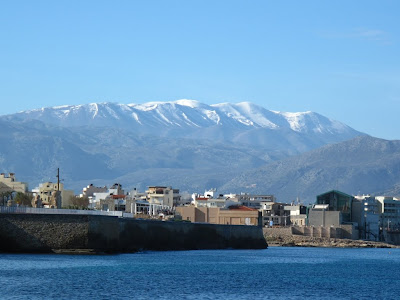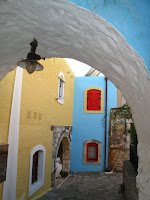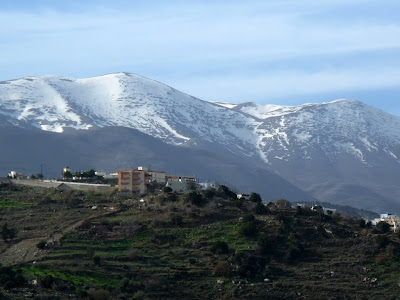
 Our final day in Crete was again beautifully warm and sunny. We were told by the rental car rep at the airport, that it was the warmest Christmas for 100 years. She was not impressed, but we have been delighted.
Our final day in Crete was again beautifully warm and sunny. We were told by the rental car rep at the airport, that it was the warmest Christmas for 100 years. She was not impressed, but we have been delighted.We spent the first half of the morning in Heraklion, at the Archaeological Museum. Unfortunately it only has a small display open at present, as the museum is being redeveloped. But the best of their artefacts are on display, and it is amazing to see items that have been recovered from the sites we visited.


 Before returning to enjoy the sun on our apartment balcony, we detoured to see a renovated monastery nearby, which other guests had recommended. Apparently the bishop in charge was credited with many miracles, and money obviously poured in to redevelop the original monastery. The new monastery is amazing, but we were told the bishop is truly a man of God,
Before returning to enjoy the sun on our apartment balcony, we detoured to see a renovated monastery nearby, which other guests had recommended. Apparently the bishop in charge was credited with many miracles, and money obviously poured in to redevelop the original monastery. The new monastery is amazing, but we were told the bishop is truly a man of God, and has moved away from the crowds to a more secluded monastery elsewhere in Crete.
and has moved away from the crowds to a more secluded monastery elsewhere in Crete.The whole time we were in Crete, the warm 'summer' weather made us long for an ice-cream. But no one stocks them in the off season. So waiting in Athens for our un-hurried connection to London, we at last were able to have an ice-cream, before flying from the high 20s to the sleet and snow showers of London.




















































